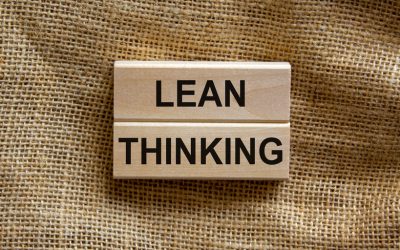 “When you appeal to the highest level of thinking, you get the highest level of performance.” Jack Stack, The Great Game of Business
“When you appeal to the highest level of thinking, you get the highest level of performance.” Jack Stack, The Great Game of Business
Not long ago, our business was growing quickly. We were adding people as fast as we could find them, sales were strong, and business was great.
With so much growth and so many new people on board, we knew we needed a better management system so that we could improve communication, maintain our strong business culture and stay on top of our financial results.
We found a better system in open book management.
It is a challenge to manage operations, stay on top of the finances, and know what’s going on in your distribution business. You want the sales growth, but you need to grow the right way. You need to grow smart, sustainable, and profitable.
Open book management provides a system to solve these pain points.
This article will provide an overview of Open Book management (OBM) so that you can decide if it is right for your beer business.
- What OBM is and how it can transform your company
- The OBM building blocks: Superior communication, sharing numbers and high-involvement planning
- How we did it in our company and the benefits we received
At the end of the article I will issue an OBM challenge to you. This idea is interesting on paper, but only matters if you take action and try it out in your distribution business.
What OBM is and how it can transform your business
Open-book management (OBM) is a system where employees are provided with company financial information so that they can make better business decisions.
The idea is that employees are more motivated, engaged and productive when they are treated as business partners – who commonly have access to financial data – rather than employees.
OBM involves four basic elements:
- Training employees so they become business literate and can understand financial statements (financially literate)
- Empowering employees to use that information in making business decisions
- Trusting them as business partners with proprietary company information
- Rewarding them fairly for the company’s success.
Think about it this way – the financial statements are the scoreboard for your business and the numbers show whether you are winning or losing. They show you where you are in relation to your financial goals and how much harder you have to push to hit your targets.
If your employees don’t know the score, how can they help you win the financial game? Short answer is that they can’t. This is like blindfolding them and asking them to deliver beer. It’s not going to come out well.
Train them, empower them and trust them to make great decisions. Then reward them when the financial targets are achieved. This is the basic success formula for OBM.
The OBM building blocks
The premise of OBM sounds great, right? Training employees, empowering them and rewarding them for a job well done; this is all stuff we are doing already or we want to do for our teams.
The question is how exactly do you implement OBM in your company to make all this good stuff a reality?
The practical side of OBM involves three main pieces:
- The weekly meeting on steroids.
- Critical Numbers. Only those numbers that make a difference in the business.
- High involvement planning. Including your greatest minds (your employees) in the financial planning process
Huddles: Weekly Meetings on Steroids
A huddle is a weekly gathering to report financial results and communicate the most important business matters facing the business. Huddles are the time to make decisions and take action.
The key difference between a huddle and a regular meeting is that huddles communicate information in numbers.
The attendees to the meeting report on the financial results for their department. They present the actual numbers (income, expense, etc.) compared to the planned results, and explain any variances. Any negative variances are discussed openly by the group with the goal of finding a solution or corrective action.
This is the magic of the huddles. All the minds around the table working on the same problem: how to improve financial results.
A key difference between huddles and ordinary meetings is that huddles are open to all employees. This isn’t just for owners or department managers – it’s for everyone in the company. Imagine harnessing the brain power of your entire organization. Huddles can do that and help transform your company.





